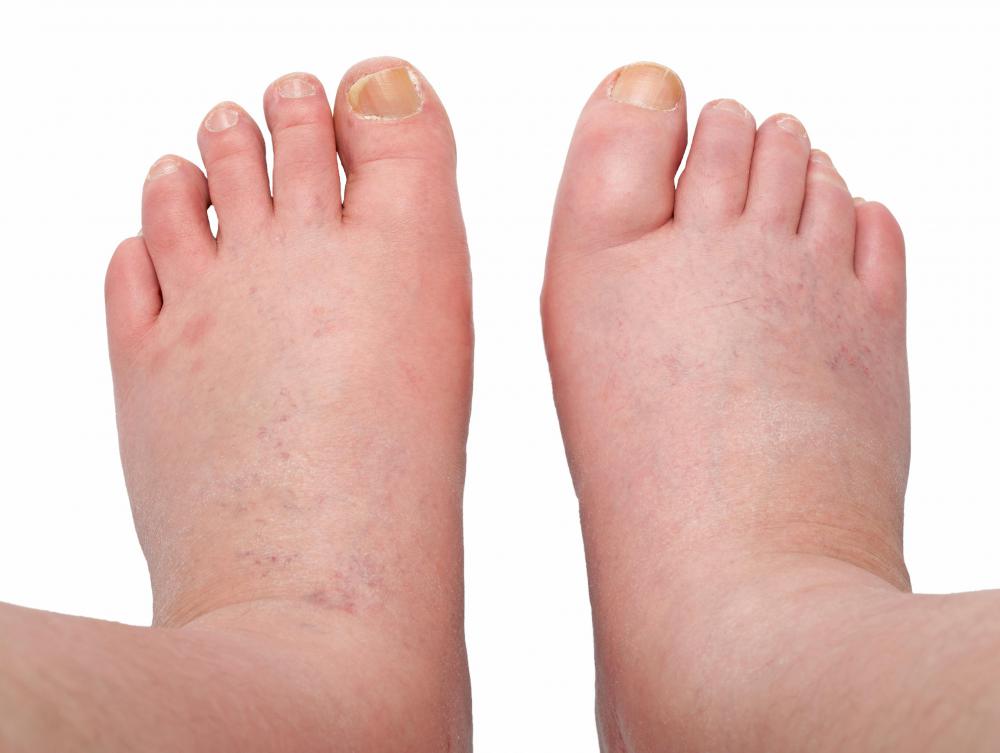At TheHealthBoard, we're committed to delivering accurate, trustworthy information. Our expert-authored content is rigorously fact-checked and sourced from credible authorities. Discover how we uphold the highest standards in providing you with reliable knowledge.
What is Acute Inflammation?
Acute inflammation, also known as short-term inflammation, refers to the swelling and skin redness that immediately affects injured tissue. Following an injury, edema, increased blood flow and an increase in other bodily fluids in the area are what prompt swelling. Acute inflammation may also be accompanied by feverish skin and pain, but both are usually temporary conditions. Acute inflammation differs from chronic inflammation, which lasts for a longer period and may repeatedly occur over time.
Most people have experienced acute types of inflammation immediately following a minor injury. A few of the many causes of short-term inflammation may include allergic skin reactions, surgical procedures, insect bites, and even scrapes and scratches that don’t break the skin’s surface. This type of temporary inflammation is actually the body’s natural defense against injury as it tries to protect an injured site by sending increased blood flow to the area, as well as protecting it with an increase in other protein-filled fluids.

Acute inflammation is characterized by three basic reactions that take place within minutes or up to two hours after an initial injury occurs. The first reaction is increased blood flow followed by a second reaction that occurs in the circulatory system’s smallest vessels. During this reaction, white blood cells and blood proteins depart from their normal course of circulation. This leads to a third reaction, which involves a migration of white blood cells that build up at the site of an injury in an attempt to ward off whatever it is that has caused damage to the injured tissue.

Acute inflammation is a temporary condition. Once the white blood cells deem that the threat has passed, the short-term inflammation will begin to subside. This process may also be expedited by applying ice to the swollen area. If acute inflammation is affecting a limb, the limb can be elevated in an attempt to reverse the fluids that have begun to accumulate. Compression may also help reduce the pain that accompanies injured tissue.

Although acute inflammation can be very painful, it is not life-threatening and most people recover from its effects without further complication. It usually only last a few hours or perhaps even a few days, but, depending on the injury, an acute bout of inflammation can last for several weeks. If infection occurs during an acute inflammation stage, this may complicate and considerably delay recovery.
AS FEATURED ON:
AS FEATURED ON:
















Discuss this Article
Post your comments